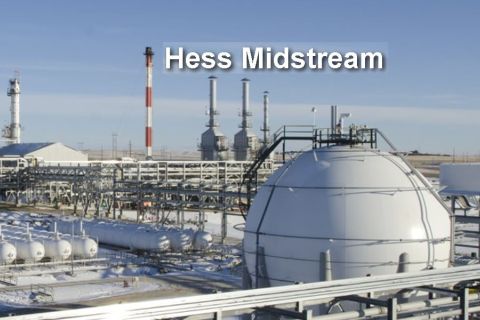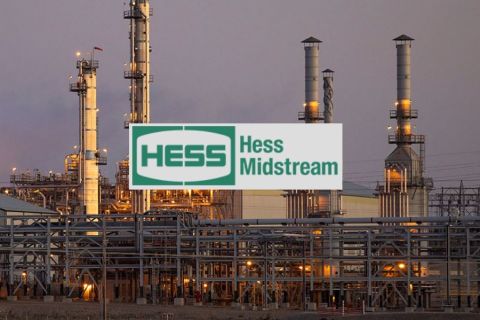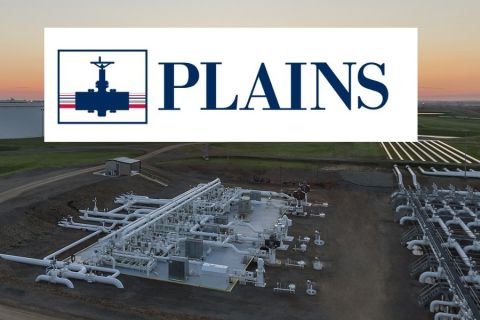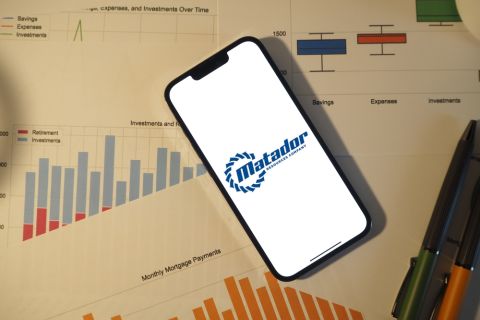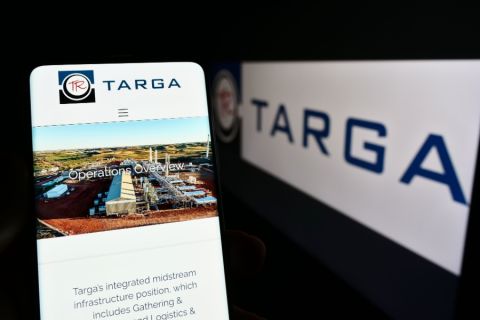 |
| ?ILLUSTRATION By PATRICK MEREWETHER |
A?pache Corp. is a growth company first, asserts president, chief executive and chief operating officer Steve Farris. Whether through the drillbit or by acquisitions, the company’s relentless mission is to grow production and reserves in the most value-enhancing way.
Watch the video interview with Steve Farris.
The picture of Apache today, a company formed in 1954, began with a series of strategic and opportunistic acquisitions 20 years ago, roughly corresponding to Farris’ arrival. The company built its portfolio both domestically and internationally, onshore and offshore, often via castoffs by major oil companies, through transactions that had many questioning its logic at the time. What few realized then was Apache’s true motive: the upside. Today those acquisitions represent a diverse foundation of seven core global operating areas with decades of running room ahead.
“Our philosophy is it’s not just acquisitions and it’s not just drilling, and it’s not just financial acumen or operating efficiency,” says Farris. “You’ve got to be able to do it all. You have to manage the way you finance acquisitions, and you have to be able to drag them home and do something with them. If all you’re doing is buying properties, you’re really just betting on a commodity price and your ability to estimate the reserves—and that’s not a value-added piece of the business.”
Farris graduated from Oklahoma State University in 1971 with degrees in accounting and education, and soon set his sights on becoming an oilman. Before joining Apache, Farris was executive vice president of independent E&P Robert W. Berry Corp. from 1978-1983, and then vice president and treasurer of Tulsa-based Terra Resources Inc., where he was involved in A&D.
In 1988, he and Terra president F.H. “Mick” Merelli (presently the president and chief executive of Cimarex Energy Co.), approached Apache founder Raymond Plank about certain Apache acreage they believed was underutilized and had potential. Plank, known for astute deal-making, instead hired Merelli as president and chief operating officer, and Farris as vice president of domestic E&P.
Since then, Farris has been a driving force behind the Apache acquire-and-exploit philosophy. He was named senior vice president in 1991, president in 1994 and chief executive officer in 2002. Since 1994, Houston-based Apache has grown from holding less than $2 billion worth of assets to more than $28 billion, production has increased from approximately 108,000 barrels of oil equivalent per day to 560,000 and proved reserves have grown from 330 million barrels equivalent to 2.4 billion in the U.S., Canada, Egypt, Australia, Argentina and the U.K. North Sea.
Farris spoke with Oil and Gas Investor about his acquisition, exploitation and exploration philosophy.
Investor: You tend to favor asset transactions over corporate transactions. Why is this?;
Farris: One reason is because you can size the transaction. With corporate deals you have to buy a whole suite of assets and not just the assets that you want. It’s much more efficient for us to buy assets that we want and leave the corporate structure alone. However, we bought Hadsen Energy in Australia, Dekalb Energy in Canada and Phoenix Resources in Egypt. If you look at any of those acquisitions, they were one-country companies with basic assets, and I wouldn’t style those as classic corporate deals.
Investor: You also fund acquisitions with cash on hand or debt more often than from issuing equity. What is your fundamental financing strategy?
Farris: Whether we use cash or stock or debt has more to do with the integrity of our balance sheet; we’re not big believers in being debt-weighted. The fundamentals of the balance sheet are more important than the actual structure you use to fund the acquisition. For the past 10 to 15 years, our debt level has been below 35% and, for the past five years, under 25%. We were more acquisitive during the 1990s because we were trying to achieve critical mass—building core areas with ample acreage and running room. That’s not to say we’re not still an acquisitive company, but our need to do transactions has lessened. We now have enough critical mass to continue to grow from the organic side of the business.''
Investor: Apache doesn’t need to acquire as much today as it has in the past?
Farris: Not as much as we did. In the past five years, 70% of our reserve additions have come through the drillbit. But we are an acquisitive company and we continue to be on the lookout for good things to buy.
Investor: What makes a good deal for Apache?
Farris: What we’re really looking for is upside—opportunities other than from the existing producing properties. If we could buy something without having to buy the production and not pay as much, I’d just as soon do that, because the most value of an acquisition is what you do after you buy it. You have to recognize that what is producing today is going to be gone in a very short time. What you’re really looking for is the asset base—the acreage associated with it. Oftentimes, at the time you’re doing the acquisition, you don’t see all of the value. Phoenix Resources is a perfect example. We gained some production but, more importantly, we gained 2 million acres in the Khalda Concession in Egypt. We drilled deeper and found what was, at the time, the largest field Apache had ever found. We ended up with about 2.3 trillion cubic feet of gas and 85 million barrels of oil in Qasr Field. We’ve found tremendous hydrocarbons in that area. If the only reason you make an acquisition is production, then you’re buying an annuity. We’re not interested in that. For example, in the Gulf of Mexico we’ve spent $3 billion in acquisitions since 1999, but we’ve also put another $4 billion into those properties. Today, we’ve earned back 143% of our money, we still own 70% of the original reserves we bought, and we’re producing about 58,000 barrels of oil and 345 million cubic feet of gas a day. The way you do that is with additional capital investment and finding additional upside.
Investor: Apache rarely sells. Why?
Farris: We do sell assets. During the past 18 months we’ve sold more than $300 million of properties in Canada, northern Louisiana and West Texas. However, we’re in the oil and gas business. If the property produces oil and gas profitably, I don’t see any reason to sell it. If you have a need to sell properties because you’ve decided not to focus on that area or because the assets are money losers, that’s one thing. But it’s amazing how many good opportunities you can find you may never have dreamed were there. We bought Dekalb in Canada in 1995, and were producing a little tight-gas-sand field called Nevis. Suddenly, a coalbed-methane play came through and we increased our production by 110 million cubic feet a day. Having good acreage in good hydrocarbon areas is key.
Investor: You’ve called your strategy “contrarian” before.
Farris: We try to zig when other people zag. We made a rule many years ago that we don’t go to auctions. We try to find opportunities in which we, as a buyer, can get together with a seller because they need something and we need something. It takes longer. You can’t plan it. In fact, we don’t plan for spending on acquisitions; we don’t budget it. If you do budget for transactions, you make mistakes. And, we tend to stay away from the market when it is expensive, like it has been for these past couple of years. We haven’t made an acquisition of any size in 18 months. Oil was selling for $50 a barrel at the time of our last purchase. We try to pick our spots. Assets are going to turn over forever. Everybody says, “I don’t think the majors are going to sell properties anymore.” I guarantee that, with what they’re going through right now, they’re going to get back into the divestiture market. When oil and gas prices were growing, it didn’t make sense for them to sell. They couldn’t get as much as they could from the cash flow. But the business has been around for 100 years and there’s always been asset turnover. So, you’ve just got to be there at the right time.
Investor: You have been the beneficiary of many divestments by the majors. How do you get ahead of the line for these?
Farris: You’ve got to work at it. We spend a lot of time talking with majors, not about specific deals, but about their plans and where they’re going. The Forties Field acquisition in the North Sea from BP is a perfect example. BP missed its earnings and production targets and was getting ready to announce its entry into Russia in the first quarter of 2004. We had gotten to know BP and they felt like we were a competent operator to take over the field in the North Sea, so we were able to buy that.
Investor: Do you purposefully target assets from majors?
Farris: Majors still have the best assets in the world. Still, they’re almost in a different business than we are. They do much better work on investments and large projects because they can put a lot of money and expertise to work. Digging in the dirt and getting two or three barrels out of another well would be infinitesimal to their bottom line.
Investor: Apache holds interests both domestically and internationally, onshore and offshore. Is this a planned diversification?
Farris: We are definitely a portfolio player. We’re not clairvoyant. Trying to figure out which commodity is going to be most important at a certain time is hard to do. We have seven core areas around the globe with different geological and geographic diversity, different depths and drilling risks, and some exploration and some mature-basin exploitation. Back in the late 1980s, when we were a small company, we decided to put 10% of our available cash flow into international opportunities. That was at a time when international E&P for a U.S.-based producer wasn’t in vogue. At the time, it was a small amount of money, but the philosophy was, if we were going to continue to grow, we would have to look outside the U.S. We think the international targets are bigger—only 3% of the world’s known hydrocarbons are in the U.S. Over time, we’ve built our production to 60% from outside the U.S. and about 45% from outside North America. As for the onshore/offshore diversification, that has more to do with where the hydrocarbons are. It’s more of an evolution than a planned strategy.
Investor: You haven’t gone after U.S. unconventional-gas plays.
Farris: We are in the Ootla shale play in Canada. Others call it Horn River, but I’m going to always call it Ootla because we were the first acreage-holders in that play. We have about 430,000 acres with our partner, EnCana Corp. We got into this Canadian shale for a number of reasons. The lease terms are significantly longer than in the U.S. You hold leases for five years and have the ability to extend them for another four years without significant drilling requirements. We were able to extend that play into areas that were not hot at the time. It just made more sense for us to pick a play that we could control.
Investor: Will Apache pursue unconventional-gas plays in the Lower 48?
Farris: Never say never, but it is probably not the time to get into shale plays in the U.S. There is an abundance of gas in the market, and you are going to see demand flatten if not go down. Whether it’s the Ootla in Canada or a shale play in the U.S., shales very much depend on prices and I’m not bullish on gas prices for the next 18 months.
Investor: With hindsight, the industry sees Apache as the fat lady—that the asset market is just right when you’re buying, and it’s overheated when you’re not. Is that just luck?
Farris: Some of it is fortuitous, honestly. We do believe in market timing. We’re going to be conservative, so we’re going to be there when other people are pulling in their horns. Right now, we find ourselves in that position.
Investor: You look for cycles?
Farris: Certainly, in terms of larger acquisitions. We definitely believe in cycles and we do try to time those. The best assets are available when people have to sell, not when people are looking for the most money for the assets they have. Even so, we make acquisitions every day. We have an acquisitions group that looks online for little auctions in our core areas to see whether somebody’s going to pay, or doesn’t understand the asset we are interested in. We’re consistently looking for bolt-ons that will add value. I’m a big believer that whether we spend $500,000 or $5 million on an acquisition, or $5 million drilling wells, the most important point is that we make the best economic decision for our shareholders. Once those reserves are on the books, shareholders have no idea whether they were bought or drilled.
Investor: You have about $4 billion available in cash and credit facilities. Will Apache be in the buyer’s column again in 2009?
Farris: We’re getting closer. There’s a perception that prices will not be going up, so I think it might be a good time for us to be back in the market. The time to make acquisitions is not when the market is frothy; it’s when people have a need to sell as opposed to just wanting to get the highest buck for the asset. Having said that, we have a growth pipeline of projects that will add 120,000 barrels to our daily production during the next four years. We don’t have any drivers that will make acquisitions necessary. We’re going to continue to be conservative. We are looking because it is a good time for us to find something that might be strategic. We have about $4 billion in firepower—but make no mistake, we won’t let it burn a hole in our pocket. We will re-enter when we come upon the right deal at the right time.
Investor: Would you add another core area?
Farris: Yes, we would. We have a new-ventures group that scours areas we think we would like to be in. It’s a tougher sell. We got into Egypt when nobody wanted to be in the Western Desert—we picked up about 6.7 million acres from Mobil and Amoco for $1 million. We got in the Carnarvon Basin in Australia when gas was selling for a buck. We got into Canada in 1995 when Canada was not looked on too favorably.
Investor: What do you think the A&D market will be like in 2009?
Farris: You’re going to see a lot of asset turnover. You’re already beginning to see it in the form of massive acreage transfers, as opposed to producing-property sales. It’s still early, if you understand my point. A lot depends on commodity prices, and those prices have been an awful lot like the economic outlook. I’m certainly not bullish about the economic outlook, in this country or in the world. We have a long way to go before the global economy gets out of the current situation.
Recommended Reading
Hess Midstream Announces 10 Million Share Secondary Offering
2024-02-07 - Global Infrastructure Partners, a Hess Midstream affiliate, will act as the selling shareholder and Hess Midstream will not receive proceeds from the public offering of shares.
Hess Midstream Subsidiary to Buy Back $100MM of Class B Units
2024-03-13 - Hess Midstream subsidiary Hess Midstream Operations will repurchase approximately 2 million Class B units equal to 1.2% of the company.
Plains All American Names Michelle Podavin Midstream Canada President
2024-03-05 - Michelle Podavin, who currently serves as senior vice president of NGL commercial assets for Plains Midstream Canada, will become president of the business unit in June.
Matador Completes NatGas Connections in Delaware Basin
2024-03-25 - Matador Resources completed natural gas pipeline connections between Pronto Midstream to San Mateo Midstream and to Matador’s acreage in the Delaware Basin.
Targa Resources Ups Quarterly Dividend by 50% YoY
2024-04-12 - Targa Resource’s board of directors increased the first-quarter 2024 dividend by 50% compared to the same quarter a year ago.

